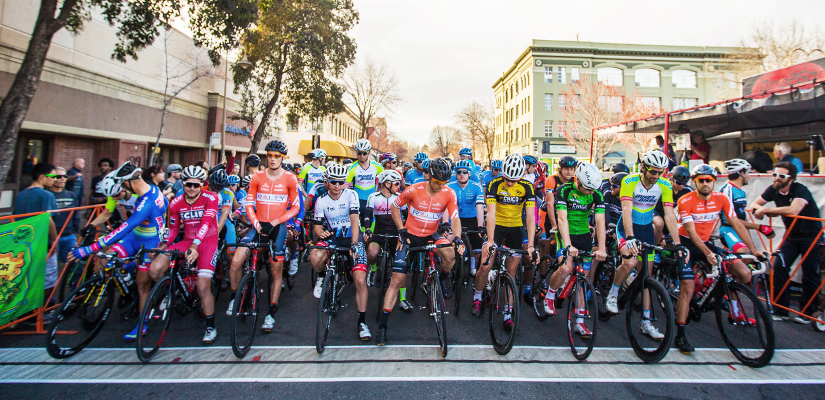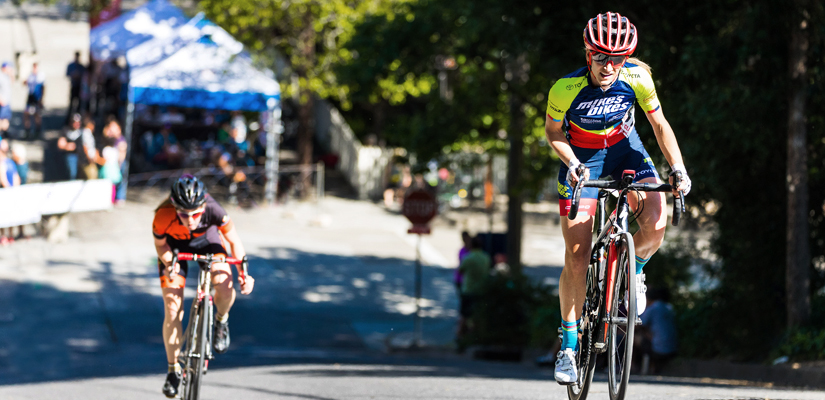What Your Cycling Racing Category Says About You

If you’re brand new to racing, it’s pretty straightforward to know which racing category you should start out in. But what if you’re coming back to racing? What category should you race and, more interestingly, what does it say about you as a racer? These are just a couple questions I’m about to dig into.
Cycling is a sport with well-established rank and file that plays a large part in creating the rich culture of cycling. These aspects are uniting, but in the same hand, gives its riders a snooty reputation. Bare in mind, reputations are just that, reputations — not facts.
All too often we tend to identify and rank ourselves and others by our racing category. More often than not this leads us to incorrect assumptions. It’s time to drop some of our hard-held beliefs and take a new look. Here are some of the most stereotype-breaking things I’ve learned about racing categories and their associated rider reputations.
Overview of Racing Categories
In the USA, road racers compete in five categories of racing, while mountain bikers only have three categories. This varies for other disciplines such as cyclocross or gravity oriented racing; it also varies country to country. In almost every case, and no matter the discipline’s number of categories, Cat 1 always represents the most competitive amateur racing classification.
In order to move from one category to the next, points need to be earned by the rider. These points are handed out based on your finishing position and how many people were in the field. Each racing organization’s upgrade requirements will differ and it may be harder to upgrade in a certain geographical area due to a few factors. The competitiveness of the racing, the number of available races and the number of racers all have a much more profound affect on a rider’s ability to upgrade categories than we give them credit for.
This brings us to my main point: Not all riders within a category are alike. While there are certain generalizations you can attach to a category, there are more anomalies to these blanketed statements than we realize. Here’s a list of famous misnomers and surprising bits of information that relate to racing categories.
“Cat 5 races are easy.”
Not true. Other than a very select few of the most elite mountain bikers or cross riders, every rider regardless of their experience or fitness needs to start at the bottom.
This creates an unpredictable mix of beginners and very fast athletes who could have near professional-level fitness but simply lack the upgrade points needed to move on to the next category. In some cases, the normalized power of the racer who wins the Cat 5 race will be higher than that of the winners in faster categories. For this reason, attaching a specific range of power-to-weight ratios or ability levels is very tough for Cat 5 racers.
“With your speed, you will be able to just ride off the front of that race.”
It’s always worth remembering that there will almost always be somebody faster than you in a race. Interestingly enough, of all the racing categories Cat 5 races may be the toughest ones for a breakaway to stick. It is very common to see a lack of team tactics or organization in early category races. The racing nous needed to operate as a team and manage breakways in a race is something built over time by dedicated athletes. In nearly every case, those athletes have accrued enough points to be racing in faster categories by the time they are able to race as a team.
The result is a pack of extremely eager racers who don’t quite know their abilities yet or how to judge a breakaway, and don’t want to miss a single move. More experienced racers know that they can let a breakaway leave as long as they work together as a team later in the race to chase them down.
I once thought I could just ride off the front at the Sea Otter Classic in a Cat 4 race. After three failed breakaway attempts I crossed the line just inside the top ten with a normalized power of 325 for 70 minutes while weighing 141pounds. That’s just over 5 w/kg for those keeping score —way more than what many people would assume a Cat 4 race winner would need.
“Not enough upgrade points? Just send in a petition.”
In the USA, every Cat 5 rider needs to complete ten races in order to upgrade. You could place dead last in every one of these races or win them all, it doesn’t matter. USAC wants you to accrue experience, and no efforts of persuasion will change that, even a link to your impressive list of KOMs on Strava. 😉
The same thing applies to higher categories, albeit with less absolutism. It’s always best to avoid thinking you are better than the category you are racing in. Be content where you are and focus on working hard.
“Cat 1 racers are good bike handlers.”
Peter Sagan seems to make a “You won’t believe what this rider did next” highlight reel after every race, but remember that he is commonly having to dodge a group of downed riders when he displays those impressive bike skills.
Even within the pro peloton there are plenty of racers who have incredibly strong fitness but lack in the bike handling department. Bike handling is a skill that is developed just like fitness: through specific focus and practice, not just riding around on your bike.
“Masters Racing is easier than Elite.”
Like most endurance sports, cycling sees amateur racers get stronger as they age into their thirties and forties. In fact, many Masters racers were once successful Elite racers that have years of experience and fitness to pull from.
This mix of Uncle Rico types and confident seasoned vets makes for competitive and organized racing that can push a younger elite racer past his limits.
So What Does Your Category Say About You As a Racer?
In short, your racing category shouldn’t say a whole lot other than how much time you’ve dedicated to racing. (Keep in mind that time isn’t synonymous with speed or ability.) Conversely, it can say a lot of incorrect things about you as a racer.
If you’re getting back into racing after a hiatus, don’t let pride keep you from dropping down to whatever category is needed. It will only help you get stronger at the right pace, avoiding burnout and fatigue.
You’re a racer — the category is just the arena. Over time that arena will change, but the important thing is to constantly improve your fitness, technical ability and racing tact along the way.
Listen to Certified Cycling Coaches Discuss Racing Categories
What Your Racing Category Says About You is just one topic we covered in episode 32 of the Ask a Cycling Coach podcast. Listen to the episode’s full recording below to hear this and other questions from cyclists get answered by our certified cycling coaches.
Additional Notes
TrainerRoad’s Ask a Cycling Coach podcast is dedicated to making you a faster cyclist. It gives you the chance to get answers to your cycling and triathlon training questions from USAC certified coaches Chad Timmerman, Jonathan Lee and special guests. Learn more about other topics we covered in the latest episode with our resources below:
- Weight loss for cyclists
- How to use Training Peaks with TrainerRoad
- How to measure your body fat
- How a power meter works
- Does low cadence affect power readings?
- How to maintain fitness
- How to deal with a plateau in fitness
- How to use rollers with TrainerRoad
- Do rollers make you faster?
- Are rollers better than trainers?
- How to raise your FTP
- In which racing category should you start?
- How to keep training with a newborn in the family
- How to balance training and family
- Does burping affect heart rate?
- How to estimate your FTP
- How to build fitness and train for road racing
- Which build plan is best for road racing?
- How to warm up for a cross country mountain bike race
- How to know if you are too tired to train
If you have a question that you’d like to ask Coach Chad, submit your question here. We’ll do our best to answer them on the next episode of the Ask a Cycling Coach podcast.
